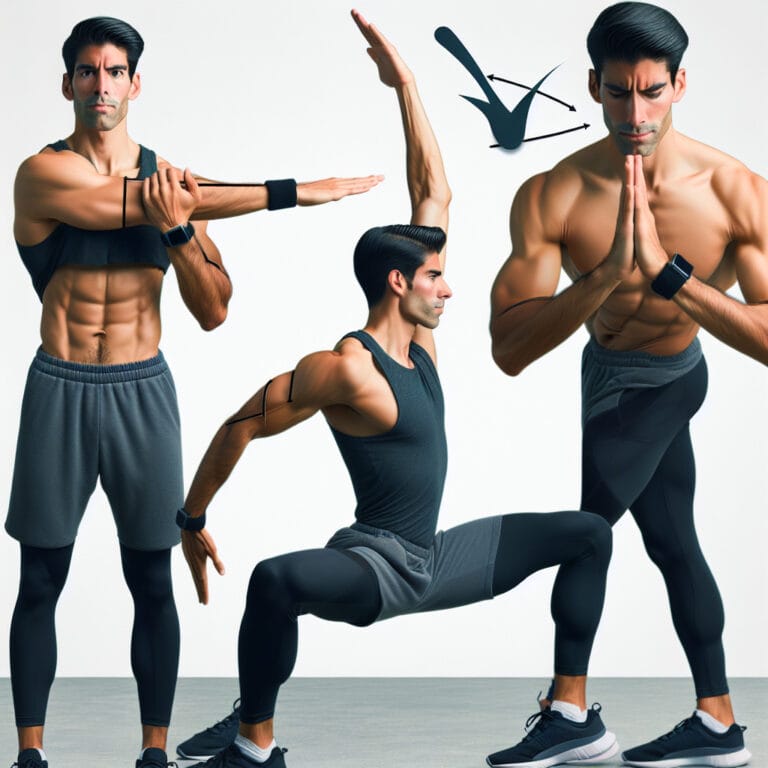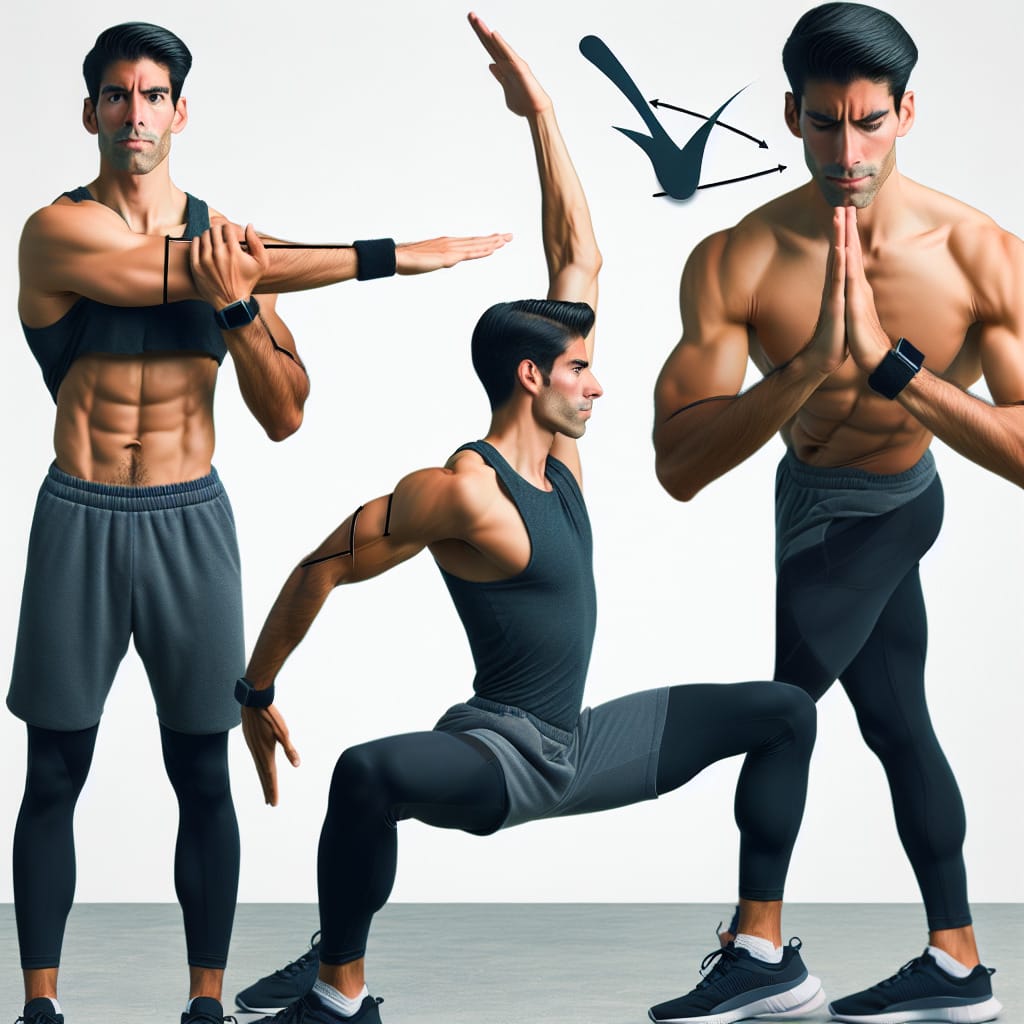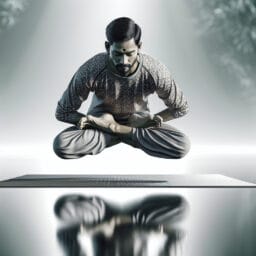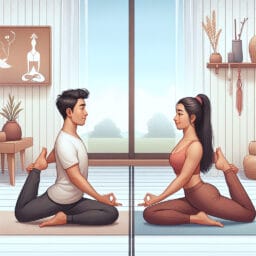
Master the Standing Split: A Comprehensive Guide to this Yoga Pose
Table of Contents
- Introduction to the Standing Split Pose
- Unveiling the Benefits of the Standing Split
- Preparatory Poses for Standing Split
- Step-by-Step Guide to Master the Standing Split
- Common Mistakes and How to Avoid Them
- Modifications and Variations of Standing Split
- Conclusion
- Frequently Asked Questions
Introduction to the Standing Split Pose
The standing split pose, also known as urdhva prasarita eka padasana, is a deep stretch that integrates both the upper and lower body. Its remarkable benefits have secured its relevance in modern yoga practices. The pose provides an intense stretch to the hamstrings and calves of the lifted leg while strengthening the thighs and knees of the standing leg. Not only does it improve balance but it also aids in enhancing focus and patience, making it a favorite among athletes. Yoga teachers often incorporate this pose into their yoga sequences due to its effectiveness in stimulating circulation, relieving tension in the back, improving digestion, and enhancing overall flexibility. There are several variations of this pose that cater to different skill levels; beginners can use a wall for support or keep their hands on their hips to maintain balance while more advanced practitioners can try reaching towards their raised foot with both hands to deepen the stretch. Whether you’re attending yoga classes or practicing guided meditation at home, mastering this versatile pose could be a game-changer for your routine.
Unveiling the Benefits of the Standing Split
The Standing Split, or Urdhva Prasarita Eka Padasana, is a significant pose in the yoga sequences for athletes and beginners alike due to its numerous benefits. Physically, it’s an intense deep stretch that significantly strengthens your standing leg while simultaneously stretching the lifted leg. This generates an equilibrium between strength and flexibility in your lower body. Mentally, through practicing this pose consistently, you will notice enhanced focus and patience – integral elements of mindfulness and meditation practices. The raised leg represents reaching towards one’s goals while the standing leg signifies grounding oneself in reality; thus embodying a profound lesson in balance – essential for overall wellness. Various modifications exist including using a wall for stability or reaching towards the raised foot with both hands for a deeper stretch. These variations make it accessible to everyone, irrespective of their level in yoga teaching or practice. As such, this pose may be regarded as one of the foundational tools for yoga teachers during their yoga teacher training sessions.
| Benefit | Description |
|---|---|
| Physical Benefit | An intense deep stretch that strengthens the standing leg and stretches the lifted leg, promoting equilibrium between strength and flexibility in the lower body. |
| Mental Benefit | Enhances focus and patience, which are integral elements of mindfulness and meditation practices. |
| Symbolic Representation | The raised leg represents reaching towards one’s goals while the standing leg signifies grounding oneself in reality; embodying a lesson in balance. |
| Variations | Modifications include using a wall for stability or reaching towards the raised foot with both hands for a deeper stretch, making it accessible to everyone, irrespective of their level in yoga teaching or practice. |
| Relevance in Yoga Teaching | Regarded as a foundational tool for yoga teachers during their yoga teacher training sessions. |
Step-by-Step Guide to Master the Standing Split
A surprising fact about the standing split pose, also known as urdhva prasarita eka padasana, is its dual role in promoting both strength and flexibility in your lower body. As part of your yoga sequences, this intense deep stretch remarkably strengthens your standing leg while concurrently stretching the lifted leg. It’s not just a physical benefit; beginners and athletes practicing this pose will notice enhanced focus and patience integral to meditation and mindfulness practices. In terms of variations, you can use a wall for stability or reach towards the raised foot with both hands for a deeper stretch – making it accessible irrespective of one’s level in yoga teaching or practice. This makes the standing split pose an important tool during yoga teacher training sessions. Just as essential are proper breathing techniques while transitioning from Forward Bend to High Lunge; remember to inhale deeply as you lift the back leg aligning your body for Urdhva Prasarita Eka Padasana or Uttitha Hasta Padangustasana (extended hand-to-big-toe pose). As you progress through these poses within your anatomy-focused yoga sequence, don’t forget to let each breath guide you closer towards achieving balance between mind and body.
Common Mistakes and How to Avoid Them
A compelling aspect of the standing split pose, or Urdhva Prasarita Eka Padasana, is its accessibility to practitioners of all levels. Beginners can leverage modifications such as using a wall for stability, whereas experienced yogis might deepen the stretch by reaching towards the raised foot with their hands. This versatile pose offers an anatomy-focused approach in yoga sequences, encouraging strength in the standing leg while facilitating a deep stretch in the lifted leg. The balance achieved serves not only to enhance physical agility but also promotes mental equilibrium – a core principle when meditating or undertaking guided meditation practices. Furthermore, it’s important to maintain proper alignment and avoid overstretching while practicing this pose – aspects that are often emphasized during yoga teacher training sessions. Whether incorporated into relaxing poses at the end of a sequence or dynamic styles benefiting athletes, variations of Urdhva Prasarita Eka Padasana bring about multidimensional growth, transforming both body and mind through consistent practice.

Modifications and Variations of Standing Split
In the realm of yoga, diversity in practice is key and the Standing Split pose, or Urdhva Prasarita Eka Padasana, is an exemplar of this concept. It’s not merely a pose; it’s a journey that allows you to explore the spectrum of your ability. Beginners can start with Half Standing Split variation or incorporate tools such as a yoga block or strap for support and balance in their yoga sequences. As one’s stability improves, the use of props can be gradually reduced. Advanced practitioners aiming to deepen their stretch and challenge their strength may choose to extend towards grasping their raised leg, bringing face closer to the standing leg – enriching both mind and body through this deep stretch. Irrespective of your level in practice or teaching, adapting this pose aids in refining alignment while promoting overall flexibility – contributing to a well-rounded yoga routine. Whether you’re settling into Uttitha Hasta Padangustasana after an invigorating sequence or concluding your class with relaxing poses like Needle Pose, standing splits serve as an indispensable tool for growth within your anatomy-focused sequence – truly embodying the philosophical foundations transcending beyond just physical benefits.
Conclusion
The standing split pose, also known as Urdhva Prasarita Eka Padasana, serves as a powerful tool in yoga sequences, catering to both beginners and experienced yogis. Its exceptional benefits contribute towards enhancing strength in the lower body and promoting flexibility through a deep stretch. It also cultivates mental equilibrium – an essence of meditation practices. Variations such as using props or adjusting leg extensions cater to different skill levels, reinforcing this pose’s inclusivity. The standing split isn’t merely a yoga pose, but a journey fostering growth where each breath guides you closer towards achieving harmony between mind and body. So whether you’re concluding your practice with relaxing poses like Needle Pose or challenging yourself with advanced modifications, integrating the standing split into your regular routine can elevate your overall wellness journey.
Frequently Asked Questions
Q: What is the meaning and importance of the Standing Split in Yoga?
A: The Standing Split is a significant yoga posture that stretches and strengthens various parts of the body. It holds much importance in yoga as it helps to increase flexibility, balance and focus.
Q: What is the history and origin of the Standing Split pose?
A: The precise origin and history of the Standing Split pose is not well-documented like most yoga poses. However, it is widely accepted as a part of traditional yoga practices.
Q: How is the Standing Split relevant in modern yoga practices?
A: The Standing Split remains relevant in modern yoga due to its multitude of benefits. It is often used in various types of yoga for its ability to stretch the hamstrings, strengthen the thighs and knees, improve balance, and enhance focus.
Q: What are the benefits of the Standing Split?
A: The Standing Split offers both physical and mental benefits. Physically, it serves to reinforce and stretch various muscles. Mentally, it enhances concentration and mindfulness, promoting overall wellness.
Q: Which poses can prepare my body for the Standing Split?
A: Poses such as the Downward-Facing Dog, Forward Bend, and Low Lunge are excellent preparatory poses for Standing Split. They help in warming up the body and getting it ready for the stretch and balance required in the Standing Split.
Q: Can you provide a step-by-step guide to perform the Standing Split?
A: To do the Standing Split, start by transitioning from a Forward Bend to a High Lunge. Then, lift your back leg while aligning your body in a straight line. Hold the pose and remember to practice correct breathing techniques throughout.
Q: What are some common mistakes to avoid when performing the Standing Split?
A: Common mistakes when performing the Standing Split include inadequate warm-up, overstretching, and incorrect body alignment. It is crucial to warm-up appropriately, listen to your body to avoid overstretching, and pay attention to maintaining proper alignment in the pose.
Q: How can I modify the Standing Split for different skill levels?
A: Beginners can incorporate yoga blocks and straps for support, while advanced practitioners can explore the Half Standing Split variation. Adapting the pose based on your skill level can make the pose more accessible and beneficial.
Q: How can I incorporate the Standing Split into regular yoga practice?
A: Consistent practice and patience are critical. Start by incorporating the Standing Split slowly into your routine, gradually increasing the duration as flexibility and strength improve. Keep in mind, progress is unique to each individual.



